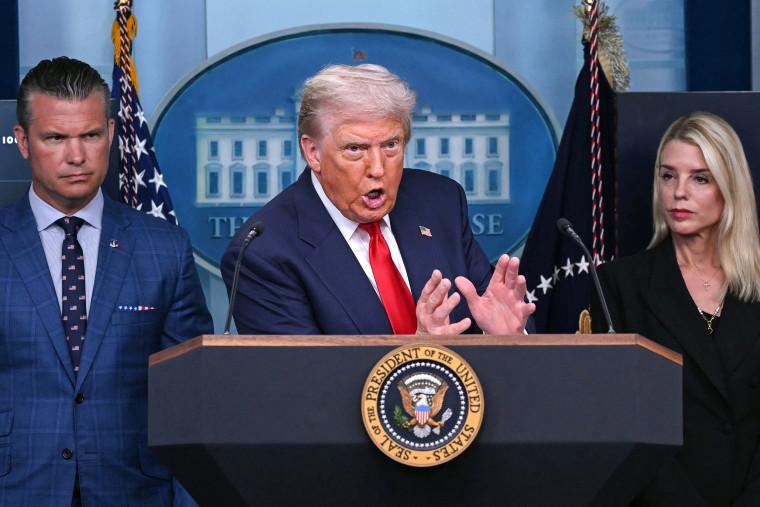Washington, D.C.’s Political Shift: Echoes of the 1980s Crime Wave
Revisiting the 1980s: A Troubled Era Mirrors Today’s Political Climate
Recent political developments in Washington, D.C., spearheaded by former President Donald Trump, have sparked unsettling comparisons to the city’s volatile period in the late 20th century. The 1980s were characterized by a surge in violent crime, social upheaval, and strained relations between communities and law enforcement. Today’s political dynamics, marked by assertive power plays and heightened tensions, evoke memories of that era’s challenges, prompting renewed scrutiny of governance, public safety, and community trust in the capital.
Notable similarities between the two periods include:
- Intense confrontations between government authorities and local populations
- Polarizing rhetoric that deepened societal divisions
- Policy approaches favoring strict law enforcement over social welfare initiatives
- A disconnect between the city’s public image and the lived experiences of many residents
| 1980s Crime Data | Current Trends |
|---|---|
| Homicide rates peaked at 482 in 1991 | Homicide numbers fluctuate but remain a persistent concern |
| High incidence of drug-related offenses | Political unrest and protests dominate media coverage |
| Widespread public skepticism toward law enforcement | Divided opinions on federal involvement in local affairs |
Political Influence and Urban Decline: Lessons from Washington’s Past
To fully grasp the current situation, it is essential to examine how political power shaped Washington, D.C.’s urban trajectory during the late 1980s. The city faced escalating violent crime rates, fueled in part by policy decisions that prioritized political dominance over community well-being. These choices often resulted in reduced funding for essential public services and neglected marginalized neighborhoods, accelerating social decay and economic hardship.
Critical factors that contributed to the city’s decline included:
- Reduced investment in social infrastructure: Budget cuts targeted community policing and social support programs, weakening public safety nets.
- Economic disenfranchisement: Job losses in manufacturing and service sectors, compounded by zoning laws favoring affluent interests.
- Deepening racial and socioeconomic divides: Policies that entrenched segregation and hindered inclusive urban renewal.
| Year | Violent Crime Rate (per 1,000 residents) | Public Assistance Budget (% of total city budget) |
|---|---|---|
| 1987 | 18.4 | 22% |
| 1989 | 24.3 | 18% |
| 1991 | 21.7 | 20% |
The data reveals a clear link between shrinking social program budgets and rising violent crime, underscoring how political agendas that sidelined community needs contributed to urban deterioration. These historical insights are vital for understanding the potential consequences of current political shifts in the capital.
Leadership’s Role in Shaping Crime and Community Well-Being
Experts analyzing the parallels between Trump’s recent political resurgence and Washington’s past turmoil emphasize the critical influence of leadership on crime trends and social stability. The late 1980s saw crime escalate amid political decisions that either alleviated or intensified urban violence. Contemporary research highlights that leadership focused on fostering community trust, equitable justice, and economic opportunity tends to reduce crime, while divisive rhetoric and neglect exacerbate disorder.
Key determinants influencing crime rates during politically charged periods include:
- Resource allocation: Balancing investment between social services and punitive law enforcement
- Community involvement: Engaging marginalized populations in safety and prevention efforts
- Economic conditions: The effects of unemployment and income disparity on criminal behavior
- Policing strategies: Emphasizing trust-building over aggressive tactics
| Leadership Strategy | Effect on Crime Rates | Illustrative Example |
|---|---|---|
| Community-Focused Policing | Marked decrease in crime | D.C. reforms in the early 1990s |
| “Tough on Crime” Messaging | Mixed results; often heightened tensions | Late 1980s crisis response |
| Inclusive Economic Development | Consistent decline in crime | Post-1994 community investment initiatives |
Strategies to Avoid Repeating Past Urban Challenges
To prevent a regression into the disorder that plagued Washington decades ago, policymakers must champion reforms centered on transparency, community partnership, and social equity. Establishing independent civilian oversight boards can rebuild public confidence in law enforcement, while expanding community policing initiatives fosters collaboration between officers and residents. Addressing systemic disparities in housing, education, and employment is equally essential to tackling the root causes of crime and unrest.
Targeted social interventions should focus on youth engagement, mental health support, and conflict resolution training. The following table outlines critical policy areas that, if effectively implemented, can fortify the city’s resilience against future instability:
| Policy Area | Primary Actions | Anticipated Benefits |
|---|---|---|
| Building Community Trust | Implement independent review boards; increase body camera usage | Greater transparency; fewer incidents of excessive force |
| Youth Engagement | Expand after-school programs; mentorship opportunities | Reduced juvenile crime rates |
| Economic Inclusion | Job training initiatives; affordable housing projects | Lower poverty-related offenses |
| Mental Health Services | Increase access to counselors; develop crisis intervention teams | Fewer violent incidents linked to untreated mental illness |
- Encourage collaboration among government bodies, nonprofits, and community organizations.
- Utilize data-driven policing to proactively address crime hotspots.
- Strengthen emergency preparedness with community input and resilience training programs.
Reflecting on the Past to Navigate the Future
As Washington, D.C. confronts the ramifications of Donald Trump’s renewed political prominence, revisiting the city’s turbulent history offers valuable perspective. Although the nature of challenges has transformed over the past three decades, the echoes of previous crises remind us of the persistent complexities in managing the nation’s capital. A nuanced understanding of this historical context is indispensable for policymakers and citizens striving to foster a safer, more equitable urban environment moving forward.







